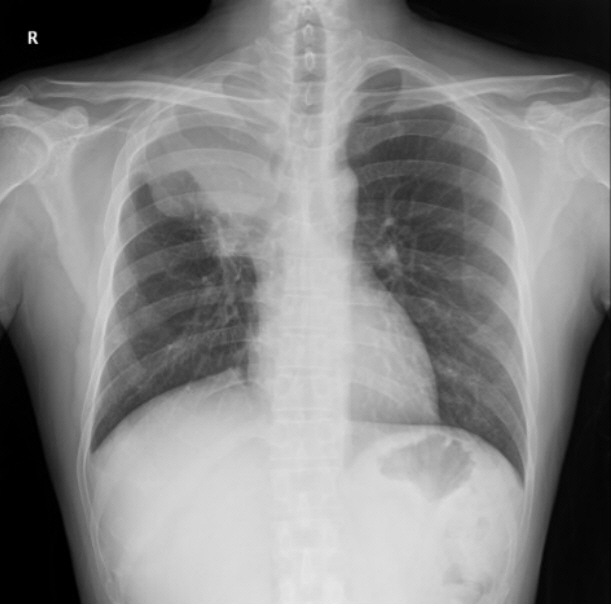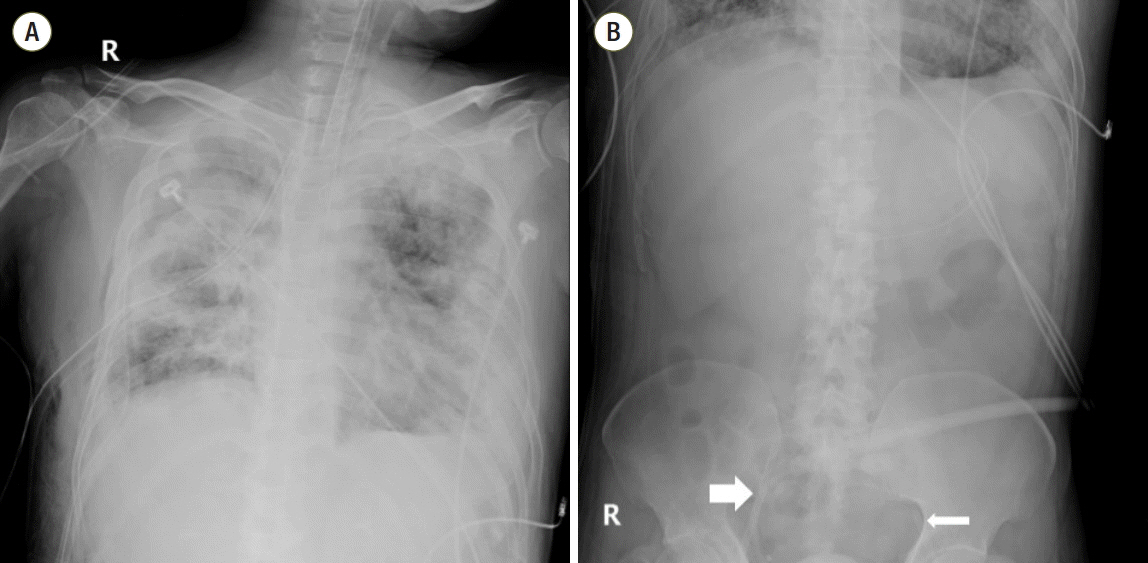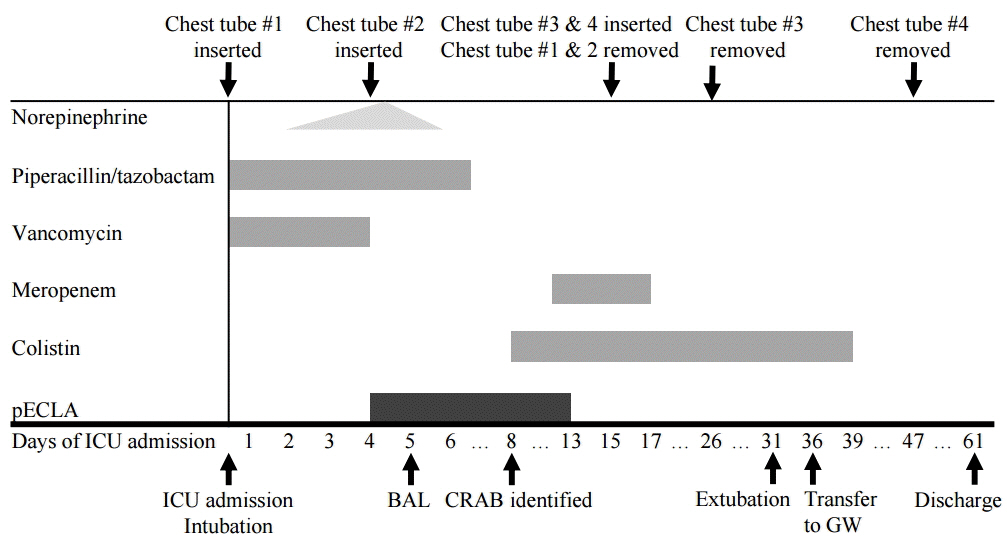Korean J Crit Care Med.
2017 Aug;32(3):284-290. 10.4266/kjccm.2016.00185.
Successful Rescue Therapy with Pumpless Extracorporeal Carbon Dioxide Removal in a Patient with Persistent Air Leakage Due to Empyema
- Affiliations
-
- 1Division of Pulmonary and Critical Care Medicine, Department of Internal Medicine, Seoul National University Bundang Hospital, Seoul National University College of Medicine, Seongnam, Korea. lungdrcho@gmail.com
- KMID: 2391188
- DOI: http://doi.org/10.4266/kjccm.2016.00185
Abstract
- A young metastatic lung cancer patient developed empyema due to an infection with carbapenem-resistant Acinetobacter baumannii. Hydropneumothorax was detected and managed by a tube thoracotomy. However, persistent air leakage through the chest tube was observed due to the presence of a bronchopleural fistula (BPF). As hypercapnic respiratory failure had progressed and the large air leak did not diminish by conservative management, a pumpless extracorporeal lung assist (pECLA) device was inserted. The pECLA allowed the patient to be weaned from mechanical ventilation and the BPF to heal. The present case shows the effective application of pECLA in a patient with empyema complicated with BPF and severe hypercapnic respiratory failure. pECLA enabled us to minimize airway pressure to aid in the closure of the BPF in the mechanically ventilated patient.
Keyword
MeSH Terms
Figure
Reference
-
References
1. Lois M, Noppen M. Bronchopleural fistulas: an overview of the problem with special focus on endoscopic management. Chest. 2005; 128:3955–65.2. Pierson DJ, Horton CA, Bates PW. Persistent bronchopleural air leak during mechanical ventilation. A review of 39 cases. Chest. 1986; 90:321–3.3. Bein T, Weber F, Philipp A, Prasser C, Pfeifer M, Schmid FX, et al. A new pumpless extracorporeal interventional lung assist in critical hypoxemia/hypercapnia. Crit Care Med. 2006; 34:1372–7.
Article4. Flörchinger B, Philipp A, Klose A, Hilker M, Kobuch R, Rupprecht L, et al. Pumpless extracorporeal lung assist: a 10-year institutional experience. Ann Thorac Surg. 2008; 86:410–7. discussion 417.
Article5. Jung C, Lauten A, Pfeifer R, Bahrmann P, Figulla HR, Ferrari M. Pumpless extracorporeal lung assist for the treatment of severe, refractory status asthmaticus. J Asthma. 2011; 48:111–3.
Article6. Petzoldt M, Braune S, Bittmann I, Kluge S. Rescue therapy with a pumpless extracorporeal lung assist device in a patient with acute interstitial lung disease and severe refractory hypercapnia. Respir Care. 2012; 57:293–7.
Article7. Fischer S, Hoeper MM, Bein T, Simon AR, Gottlieb J, Wisser W, et al. Interventional lung assist: a new concept of protective ventilation in bridge to lung transplantation. ASAIO J. 2008; 54:3–10.
Article8. Pesenti A, Rossi GP, Pelosi P, Brazzi L, Gattinoni L. Percutaneous extracorporeal CO2 removal in a patient with bullous emphysema with recurrent bilateral pneumothoraces and respiratory failure. Anesthesiology. 1990; 72:571–3.
Article9. Hommel M, Deja M, von Dossow V, Diemel K, Heidenhain C, Spies C, et al. Bronchial fistulae in ARDS patients: management with an extracorporeal lung assist device. Eur Respir J. 2008; 32:1652–5.
Article10. Bombino M, Patroniti N, Foti G, Isgrò S, Grasselli G, Pesenti A. Bronchopleural fistulae and pulmonary ossification in posttraumatic acute respiratory distress syndrome: successful treatment with extracorporeal support. ASAIO J. 2011; 57:336–40.
Article
- Full Text Links
- Actions
-
Cited
- CITED
-
- Close
- Share
- Similar articles
-
- A Case of Pumpless Interventional Lung Assist Application in a Tuberculosis Destroyed Lung Patient with Severe Hypercapnic Respiratory Failure
- A case of nevus comedonicus-treated by carbon dioxide laser
- A Case of iLA Application in a Patient with Refractory Asthma Who Is Nonresponsive to Conventional Mechanical Ventilation: A Case Report
- Anesthesia in Patient with Bronchopleural Fistula: A case report
- Case of cardiac arrest due to carbon dioxide poisoning following an explosion of a carbon dioxide tank






